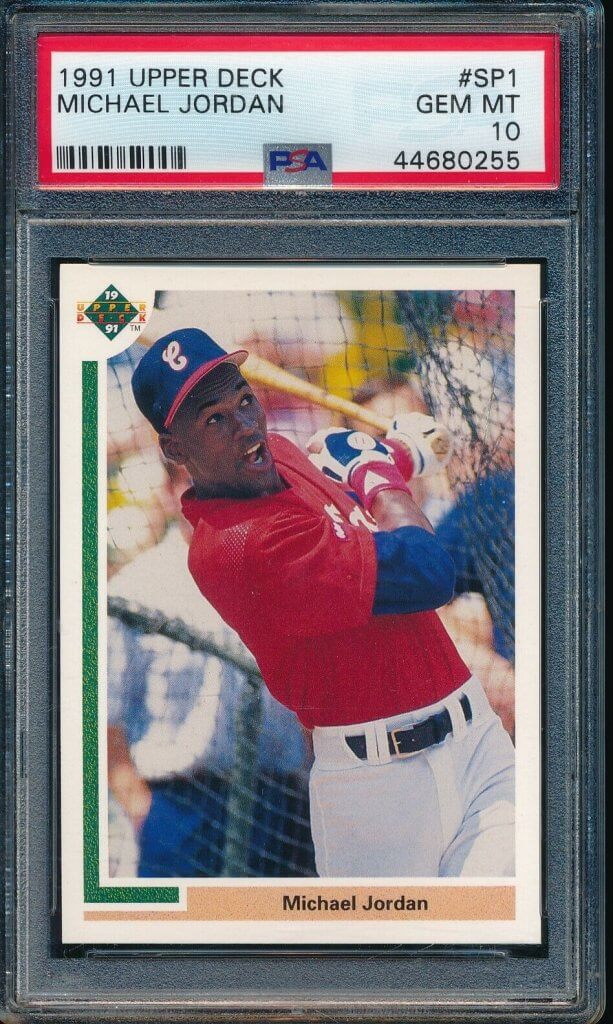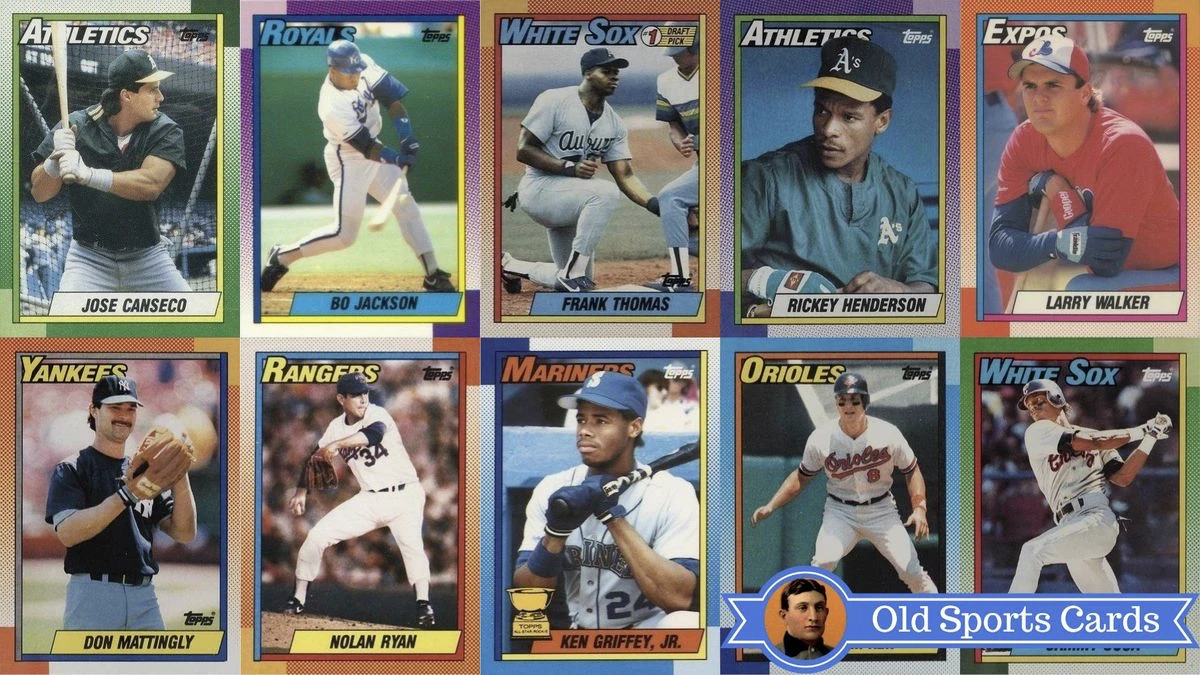Baseball cards from the 1990s have a unique charm. Collectors value them for their nostalgia and potential worth.
If you grew up in the 90s, you might remember trading cards with friends. These cards weren’t just pieces of cardboard; they were treasures. Today, some of these cards are incredibly valuable. For collectors, finding that one rare card can be exciting.
This list of the 100 most valuable baseball cards from the 1990s will take you on a trip down memory lane. It will also show you how much these little treasures are worth now. Get ready to discover some hidden gems and learn about the cards that have stood the test of time.

Credit: www.youtube.com
Introduction To 1990s Baseball Cards
The 1990s were a golden era for baseball card collectors. During this decade, baseball cards became more than just a hobby. They turned into valuable collectibles. This blog post dives into the most valuable baseball cards from the 1990s.
Rise Of Baseball Card Collecting
The 1990s saw a huge surge in baseball card collecting. The rise of sports media and television increased interest in baseball. Children and adults alike began to collect baseball cards. This was a time when cards were not just for play. They were seen as investments.
Many collectors bought packs hoping to find rare cards. Companies began printing cards in large quantities. Card shows and conventions became popular. Collectors traded cards with each other. The excitement was palpable.
Significance Of 1990s Cards
Baseball cards from the 1990s hold a special place in the hearts of collectors. Many of these cards feature legendary players. Some of these players started their careers in the 1990s.
Here are some reasons why 1990s baseball cards are significant:
- Rookie Cards: Many players debuted in this decade.
- Limited Editions: Companies produced special edition cards.
- High Demand: Collectors sought after rare and unique cards.
These factors make 1990s baseball cards highly valuable. Collectors still treasure these cards today. They hold memories and represent a significant era in baseball history.
Key Factors Influencing Card Value
The value of baseball cards from the 1990s can vary widely. Several key factors influence how much a card is worth. These factors include player popularity, card condition, and rarity. Understanding these can help collectors determine which cards to keep an eye on.
Player Popularity
The fame of the player on the card greatly affects its value. Cards featuring well-known players are often more valuable. For example, cards of players like Ken Griffey Jr. or Derek Jeter are in high demand. Collectors are willing to pay more for these cards. The player’s career achievements and public image also play a role. A popular player with a strong fan base can make a card more sought after.
Card Condition
The condition of a card is crucial. A card in mint condition is worth more. Factors like corners, edges, surface, and centering are important. Even minor damage can reduce the card’s value. Cards graded by professional services are more trusted. They provide a clear measure of the card’s condition. Higher grades mean higher value.
Rarity And Scarcity
Rare and scarce cards are usually more valuable. The print run of the card affects its rarity. Limited edition cards are highly sought after. Error cards and variations can also be rare. Some cards were produced in smaller quantities, making them harder to find. Scarcity creates demand, driving up the card’s value.
Top Rookie Cards Of The 1990s
The 1990s brought many memorable moments in baseball. Rookie cards from this era have become highly valuable. Collectors seek these treasures for their rarity and historical significance. Here, we explore the top rookie cards from the 1990s.
Most Sought-after Rookies
During the 1990s, several players emerged as stars. Their rookie cards are now highly sought after. Here are some of the most desired rookie cards:
| Player | Card | Year |
|---|---|---|
| Derek Jeter | 1993 SP Foil | 1993 |
| Chipper Jones | 1991 Topps Desert Shield | 1991 |
| Alex Rodriguez | 1994 SP Foil | 1994 |
Derek Jeter’s 1993 SP Foil card is one of the most valuable. Its condition-sensitive foil makes it rare in high grades. Chipper Jones and Alex Rodriguez also have sought-after rookie cards. Their cards are known for their high value and appeal to collectors.
Investment Potential
Investing in rookie cards can be profitable. The value of these cards often increases over time. Here are some reasons why:
- Rarity: Limited production increases value.
- Condition: Mint condition cards are worth more.
- Player’s Career: Hall of Fame players’ cards hold high value.
For instance, Derek Jeter’s 1993 SP Foil card has seen significant price increases. From a few hundred dollars to several thousand, its value continues to grow. Investing in well-maintained cards of star players is a wise choice.
In summary, the top rookie cards of the 1990s are valuable. They offer great investment potential for collectors. Owning a piece of baseball history can be both rewarding and profitable.
Iconic Players And Their Cards
The 1990s was a golden era for baseball. Many iconic players emerged during this time, leaving a lasting legacy. Their baseball cards became highly valuable and sought after by collectors. In this section, we will explore some of these iconic players and their most valuable cards.
Hall Of Famers
Several Hall of Famers from the 1990s have cards that are worth a fortune. Let’s take a look at some of them:
- Ken Griffey Jr. – His 1989 Upper Deck rookie card is legendary. It is one of the most sought-after cards from the era.
- Chipper Jones – The 1991 Topps Desert Shield card is a gem. It is rare and highly valued.
- Mike Piazza – Piazza’s 1992 Bowman rookie card is another prized possession. Collectors often seek it out.
Legendary Performances
The 1990s saw many legendary performances that boosted the value of players’ cards. Here are a few notable examples:
| Player | Performance | Card |
|---|---|---|
| Cal Ripken Jr. | 2,632 consecutive games played | 1990 Topps |
| Barry Bonds | Single-season home run record | 1993 SP Foil |
| Greg Maddux | Four consecutive Cy Young Awards | 1990 Leaf |
These performances cemented their place in baseball history. Their cards became valuable collectibles. Fans and collectors alike cherish these cards.
Rare Inserts And Special Editions
Baseball cards from the 1990s often feature rare inserts and special editions. These cards are unique and highly sought after by collectors. Rare inserts are limited in number and often feature special designs. They add value and excitement to any collection.
Chase Cards
Chase cards are a type of rare insert. Collectors find them in special packs. They are harder to find than regular cards. This makes them very valuable. Chase cards often feature star players, limited designs, or special themes.
- Star Player Chase Cards
- Autographed Chase Cards
- Themed Chase Cards
Finding a chase card feels like winning the lottery. It is an exciting moment for any collector. These cards often become the centerpiece of a collection.
Limited Print Runs
Limited print runs make cards rare and valuable. These cards are printed in small quantities. Once they are gone, they are gone forever. Collectors love limited print runs because of their exclusivity.
| Card Type | Print Run |
|---|---|
| Holographic Cards | 1,000 |
| Autographed Cards | 500 |
| Special Edition Cards | 200 |
Limited print runs ensure that only a few collectors own these cards. This rarity increases their value and desirability.
Grading And Its Impact On Value
Grading greatly affects the value of baseball cards from the 1990s. Higher grades can significantly increase a card’s worth. Collectors often seek well-graded cards to ensure authenticity and condition.
Understanding the value of baseball cards from the 1990s can be tricky. Grading plays a huge role in determining their worth. A card’s grade can make a big difference in its market price.
Importance Of Professional Grading
Professional grading is crucial for several reasons. First, it ensures the card’s authenticity. This process verifies that the card is genuine. Second, it assesses the card’s condition. Minor flaws can greatly reduce its value. Third, graded cards are easier to sell. Buyers prefer cards with a certified grade.
Top Grading Companies
Several companies are trusted for grading baseball cards. The most popular is PSA (Professional Sports Authenticator). PSA grades cards on a scale of 1 to 10. Another top company is Beckett Grading Services (BGS). BGS uses a similar scale but is known for its strict standards. Sports Card Guarantee (SGC) is also respected in the hobby. SGC has been grading cards since 1998. Each of these companies has its strengths. Choosing the right one can affect your card’s value. Make sure to research and choose wisely. “`
Market Trends And Sales Records
The market for baseball cards from the 1990s has experienced significant changes in value. Understanding the market trends and sales records can guide collectors in making informed decisions. This section explores recent high-value sales and the current trends in collecting these valuable cards.
Recent High-value Sales
Some 1990s baseball cards have fetched impressive prices at auctions. The following are a few notable sales:
| Card | Sale Price | Year |
|---|---|---|
| 1993 SP Derek Jeter Rookie Card | $99,100 | 2021 |
| 1990 Frank Thomas No Name on Front | $20,000 | 2020 |
| 1992 Bowman Mariano Rivera Rookie Card | $18,500 | 2019 |
These sales highlight the potential value of 1990s baseball cards. Collectors should keep an eye on auction results to stay informed.
Trends In Collecting
Collecting trends have shifted over the years. Here are some current trends:
- Grading: Professionally graded cards often fetch higher prices. Collectors prefer cards with high grades.
- Rarity: Rare cards, such as error cards, are highly sought after. Their scarcity drives up their value.
- Autographs: Cards with player autographs are in demand. They add a personal touch and increase the card’s worth.
Collectors are also focusing on key rookie cards. These cards have a history of strong sales performance. Staying updated on market trends can help collectors make profitable investments.

Credit: www.rorzcards.com
Tips For Collectors
Collecting baseball cards from the 1990s can be both exciting and rewarding. To make the most of your collection, it’s important to understand how to identify valuable cards and keep them in good condition. Here are some practical tips to help you along the way.
How To Spot Valuable Cards
Valuable cards often feature popular players. Look for rookies, hall-of-famers, and limited editions. Check for cards with autographs or game-used memorabilia. Rare cards tend to be more valuable. Review price guides and online marketplaces for current trends. Keep an eye out for errors and misprints, which can increase value.
Maintaining Card Condition
Maintaining card condition is crucial for preserving value. Store cards in protective sleeves or hard cases. Keep them in a cool, dry place to prevent damage. Avoid direct sunlight, which can fade colors. Handle cards with clean hands to avoid fingerprints and smudges. Regularly inspect and clean storage areas to keep dust and pests away.

Credit: www.oldsportscards.com
Frequently Asked Questions
What Are The Most Valuable Baseball Cards From The 1990s?
The most valuable baseball cards from the 1990s include rookie cards of Derek Jeter, Chipper Jones, and Alex Rodriguez. These cards are highly sought after by collectors due to their rarity and the players’ successful careers.
How Can I Determine The Value Of 1990s Baseball Cards?
To determine the value, check the card’s condition, rarity, and player popularity. Professional grading services like PSA can provide an official appraisal. Online marketplaces and price guides also offer insights into current market values.
Why Are 1990s Baseball Cards Valuable?
1990s baseball cards are valuable due to the era’s iconic players and limited print runs. Collectors seek cards of Hall of Famers and rookie cards. Additionally, high-grade cards from this era are rarer, increasing their value.
Where Can I Buy 1990s Baseball Cards?
You can buy 1990s baseball cards from online marketplaces, specialty hobby shops, and card shows. Websites like eBay and COMC offer a wide selection. Local sports card shops and collector conventions are also great sources.
Conclusion
Collecting baseball cards from the 1990s can be exciting and rewarding. These cards hold sentimental and monetary value. Finding rare cards adds thrill to the hobby. Always keep an eye out for hidden gems. Check card conditions for maximum value.
Enjoy the process of building your collection. Happy collecting!





